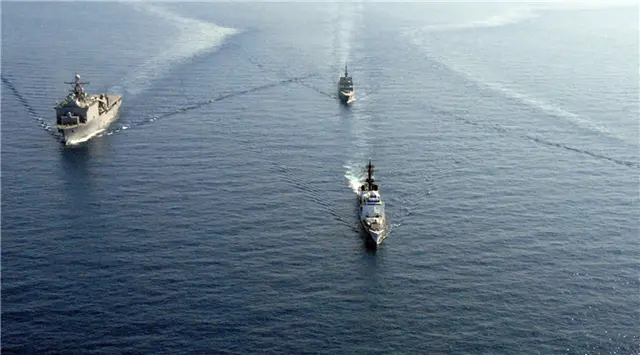The U.S. government is recently struggling hard to justify its criticism of China's defensive moves in the South China Sea, because it is clear that it is the United States, not China, that is the real source of militarization of the region.
China's deployment of a surface-to-air missile system on the Xisha Islands, an inherent part of China's territory, is defensive in nature and falls within its sovereign rights and international law.
In an attempt to increase pressure on China, the U.S. government keeps slinging mud at China, calling the deployment a move to "militarize" the region.
Over the past few days, U.S. State Department spokesmen have been hyping up accusations against China over the missile system deployment, alleging that China's move of "militarization" will lead to further tensions in the region and is "counterproductive" to the peaceful resolution of the maritime disputes there.
Asked to clarify if the recent U.S. action of sending warships and fighter jets into territorial waters of Chinese islands in the South China Sea constituted "militarization" of the region, the spokesmen insisted that the U.S. was doing that to exert the so-called "freedom of navigation" rights.
Obviously, their defenses of the provocative U.S. actions against China are pale and invalid. It is a pure fallacy that Washington thinks one country, which is repeatedly threatened by the U.S. military provocations, should not take any defensive measures to protect its own rights.
Turning a deaf ear to China's calls for honoring its promise not to take sides on the maritime disputes, the U.S. has since last October sent warships and military jets to deliberately violate China's territorial waters in the South China Sea.
Apparently, Washington is once again adopting double standards over the issue.
China is not the first or only party in the disputes which has taken steps to build infrastructure and defense facilities on the islands.
However, while justifying any provocative acts by its ally such as the Philippines, or partner countries, the U.S. always points a finger at China for being the bully or villain.
The deployment of defense facilities on Yongxing Island is China's exercise of sovereignty as granted by international law to sovereign states and has been going on for decades. It is not whatsoever related to "militarization."
Fearing that China's rising power and influence will threaten its hegemony in the Asian-Pacific region, Washington in the past seven years has been pushing forward its "Asian Rebalance" strategy, aiming to contain China economically, diplomatically and militarily.
Most notably, the U.S. prioritizes the military perspective of this strategy by shifting most of its naval power and most advanced equipment to the region, deploying more troops and providing military aid to some claimants to bolster their capabilities to confront China.
Resorting to fear-mongering by preaching the so-called China Threat over the maritime disputes, Washington plots to forge a coalition to encircle China and force the Asian country to dance to its tune. But this is doomed to failure, as China has proven to be a peacemaker instead of a troublemaker in its long history.
China, though, has agreed on the U.S. stance that the maritime disputes in the South China Sea should be resolved peacefully through diplomacy in accordance with international laws.
But Washington needs to be truly impartial on the disputes, and needs to stop defaming China or escalating tensions in the region to fish benefits from the troubled waters.
 简体中文
简体中文



